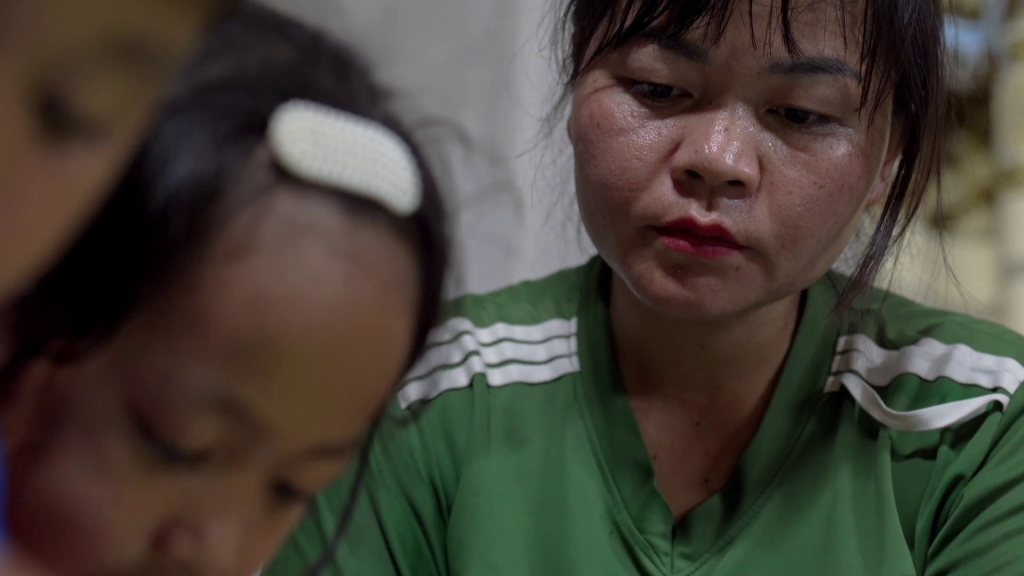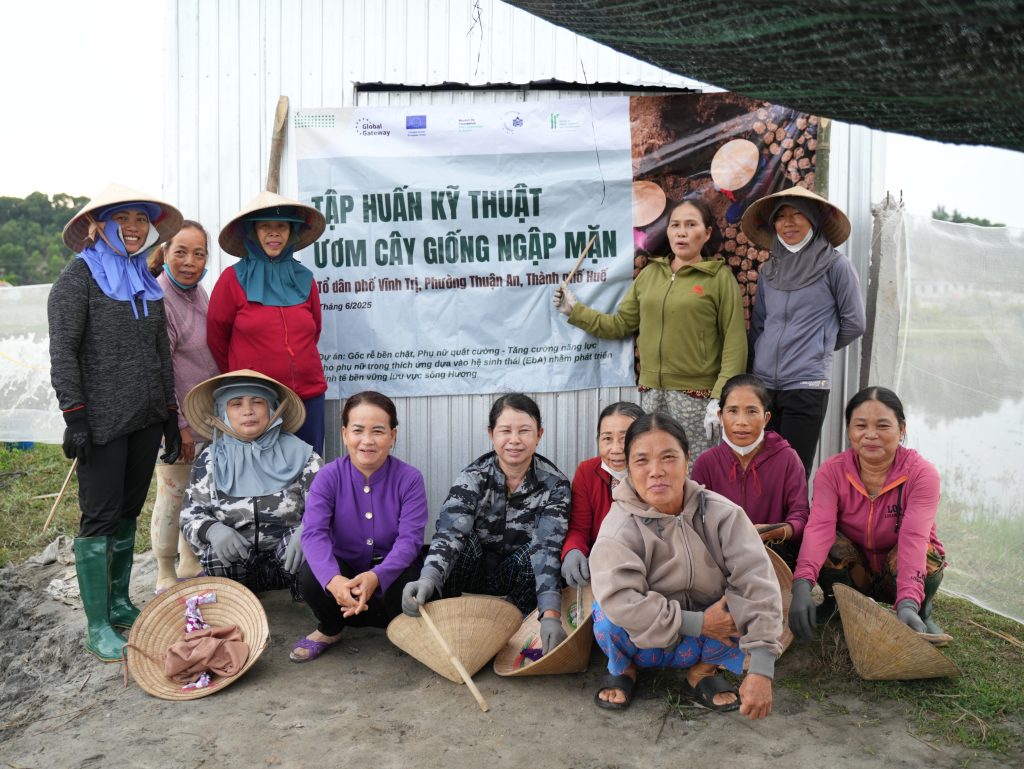As part of the project “Research on the current status and proposals for the development of aquaculture – cage fish farming model in A Lưới district, Thừa Thiên Huế province,” funded by Oxfam Vietnam, the Water Resource Conservation and Development Center under the Vietnam Union of Science and Technology Associations, in collaboration with the Center for Social Research and Development (CSRD), organized a study tour to learn about aquaculture and water resource management in Tuyên Quang province. The delegation consisted of 39 people, including 28 members of the A Lưới community from the communes of Hồng Thái, Hồng Thượng, Sơn Thủy, Quảng Nhâm, Hồng Kim, along with representatives from the A Lưới Women’s Union and various provincial departments and agencies.
Visit and gain experience at the Livestock, Veterinary, and Fisheries Sub-Department of Tuyen Quang Province
On November 7, 2024, the A Luoi community visited the Livestock, Veterinary, and Aquaculture Department of Tuyên Quang Province for a working session. During the visit, the team was briefed on the experience of applying state policies at the provincial, district, and commune levels, focusing on policy development and implementation. The delegation also learned about the management, protection, and sustainable development of aquatic resources in Tuyên Quang, with particular emphasis on the co-management model. This approach encourages collaboration between local communities and authorities to boost production capacity and preserve the ecological and social value of the region’s resources. The group also gained insights into the current status of natural fishing and aquaculture activities in the area. During the discussions, it was noted that challenges still exist in the process of issuing permits for the use of water surfaces for aquaculture. The delegation showed keen interest in understanding the role of local authorities in issuing licenses to individuals, cooperatives, or businesses for resource exploitation..
The A Luoi Community also explored the fishing and aquaculture activities in the Na Hang hydroelectric reservoir, which covers more than 8,000 hectares of water, with depths reaching up to 120 meters in some areas. The reservoir’s unique terrain, featuring inlets ideal for aquaculture and spawning grounds, provides favorable conditions for both conservation and aquaculture practices. However, challenges persist in the permit issuance process. In terms of resource management within the reservoir, each of the six communes in the area has set up a co-management group for aquatic resources. These groups operate effectively and play a vital role in maintaining the environmental quality of the reservoir and ensuring local social stability. Local authorities actively support the development of these initiatives while enforcing strict regulations on aquaculture and fishing in the reservoir.
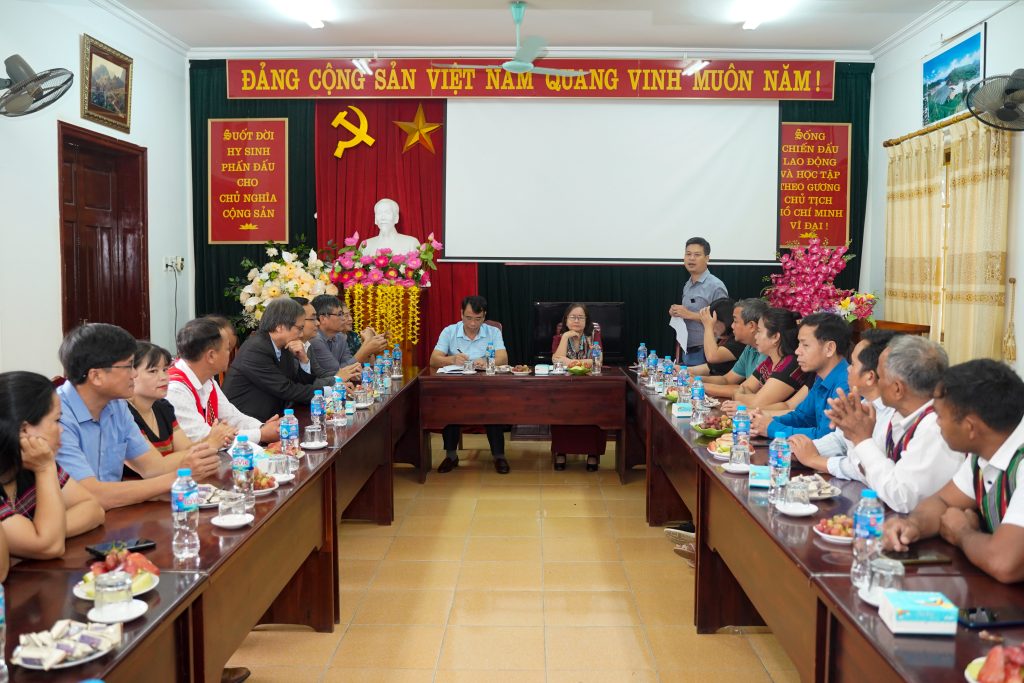
Visit and gain experience at the Livestock, Veterinary, and Fisheries Sub-Department of Tuyen Quang Province
A Study Tour to Na Hang District
On the afternoon of November 7th, 2024, the A Lưới community visited the Department of Agriculture and Rural Development in Na Hang District for a working session. During the visit, the A Lưới community learned about local ecosystem-based livelihood models, with a particular focus on the co-management approach for the sustainable use and exploitation of aquatic resources and ecotourism.
The A Luoi people were introduced to various livelihood models that are rooted in the local ecosystem and community, emphasizing the importance of co-management for the protection and sustainable use of aquatic resources. It was highlighted that managing these resources and ecosystems sustainably requires more than just state oversight—it necessitates active community involvement. Shared management responsibilities should focus on balancing the interests of all stakeholders, promoting responsible use, and ensuring sustainable exploitation of resources.
Mr. Vi Ngọc Quý, Head of the Department of Agriculture and Rural Development of Na Hang District, gave a comprehensive presentation on the management and regulation of aquatic resource use in the Tuyên Quang Hydroelectric Reservoir. The district’s People’s Committee and the Department of Agriculture and Rural Development have not only done an excellent job of raising awareness and educating local organizations and individuals about the Fisheries Law of November 21, 2017, and related regulations but have also issued directives for local agencies and authorities to ensure effective management, protection, and development of aquatic resources, particularly in the Tuyên Quang reservoir area.
(Interview Mr. Vi Ngọc Quý) We also encourage the development of cooperatives, particularly in aquaculture on the reservoir. Through this, the cooperative model for fish farming has provided stable income. For those joining the cooperatives, we have supported them with government funding to invest in infrastructure, such as building cages, purchasing fish fry, and providing initial support to ease the financial burden on the cooperatives. As a result, the members of these cooperatives have embraced the model and developed it very successfully. Currently, the cooperative model serves both as a dining service and a tourism service, leading to relatively high income.
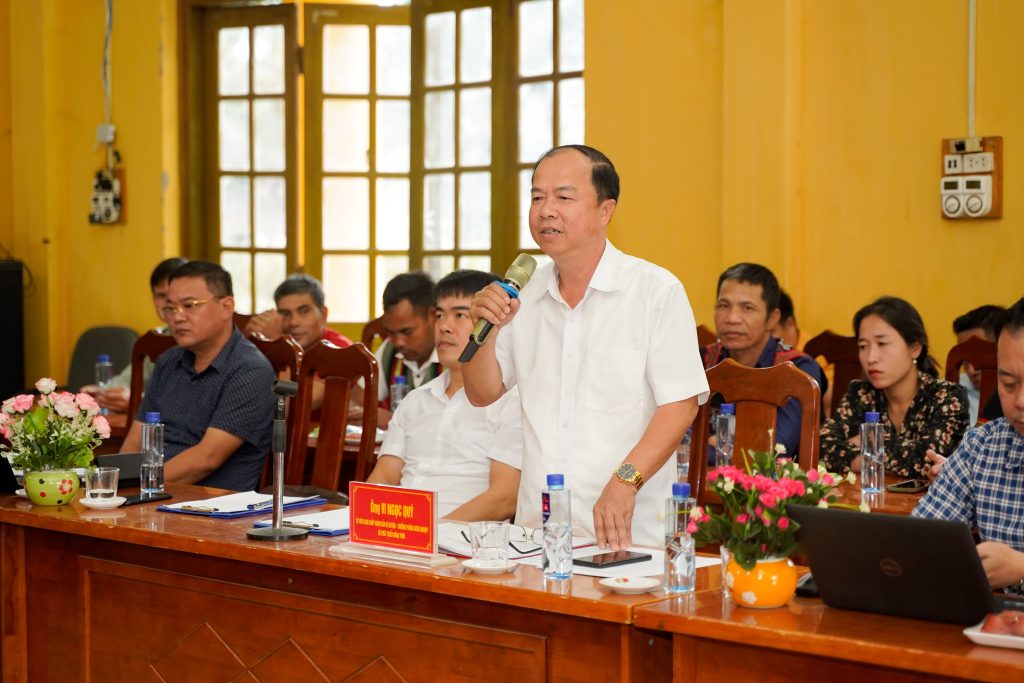
In addition, the involvement of businesses, particularly the Nhật Nam Aquatic Private Limited Company, which represents the cooperatives engaged in cage fish farming in the Na Hang Hydroelectric Reservoir, is a new and noteworthy development that should be learned from.
(Interview Mr. Vi Quý Đức – The Nhật Nam Aquatic Private Limited Company) During the process of organizing and connecting local people for aquaculture and fishing activities, we have also provided advice and proposed management models to protect aquatic resources, using a co-management approach. This model is highly suitable for the unique terrain and conditions of the Na Hang Reservoir. Following the guidelines of Decree 26 under the Fisheries Law, the co-management group plays an essential role in protecting aquatic resources. It helps prevent illegal fishing practices and unauthorized environmental activities, while also promoting the protection and sustainable development of aquatic resources. Moreover, the model ensures the efficient exploitation of resources by developing appropriate exploitation plans. This approach creates stable livelihoods for local communities, with aquaculture and fishing activities carried out on water surfaces allocated by the district People’s Committee for management and protection.
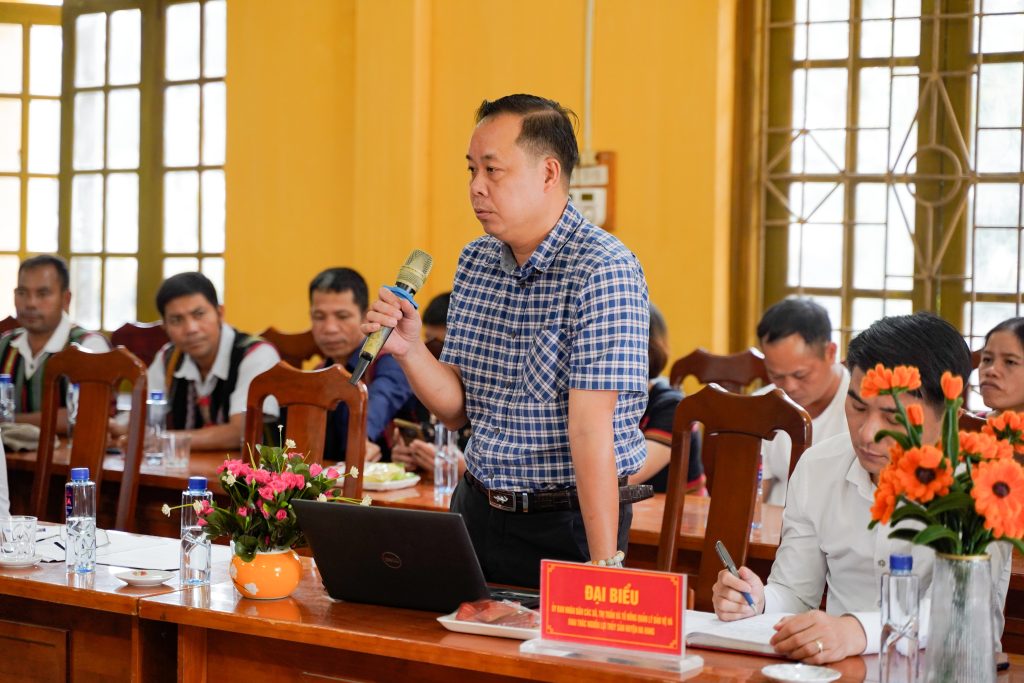
The total natural water surface area in the district is over 4,600 hectares, with 4,500 hectares in the reservoir area and 105 hectares in the downstream area of the hydroelectric plant.
Although the models face many challenges due to the lack of specific policies, unclear mechanisms, and insufficient funding to sustain activities, the impact of the co-management model has been tremendous. As of now, through the collaboration between businesses and local authorities, there are 6 community organizations in Na Hang District actively participating in co-management and protecting aquatic resources. These organizations have been granted management authority, with 361 households registered to participate in these efforts. The delegation shared and discussed their experiences and challenges, exchanging ideas about local issues, difficulties, and opportunities, in order to learn from each other’s experiences during the study tour.
Through the study tour in Tuyên Quang Province and Na Hang Township, the majority of community members expressed great satisfaction with the organization of this trip. It provided an opportunity for the people to witness firsthand the processes and techniques used in aquaculture that yield high economic benefits. This model is particularly suitable for communities living in areas with hydroelectric reservoirs, such as those in A Lưới District. Although there are differences in natural conditions, the A Lưới community can explore and apply this new livelihood model, including cage fish farming in hydroelectric reservoirs, to develop the local economy, generate income, and contribute to poverty reduction..
Mr. Hồ Văn Nhi, Vice Chairman of the People’s Committee of Hồng Thượng Commune: From the perspective of the commune’s People’s Committee, I am very pleased with this trip. Specifically, Hồng Thượng Commune has three community groups, and Mr. Thắng’s model has proven to be very effective with the support and assistance from the Center for Social Research and Development. Through trips like this, the awareness of the local people is raised, their understanding expanded, which helps improve their livelihoods. Here, these groups and households—each with about 10 members—have created job opportunities for the community. On behalf of the leadership of the commune, I would like to express my sincere thanks to the Center for the support given to Hồng Thượng Commune in particular and A Lưới District in general. On behalf of the People’s Committee of Hồng Thượng, I am truly grateful.
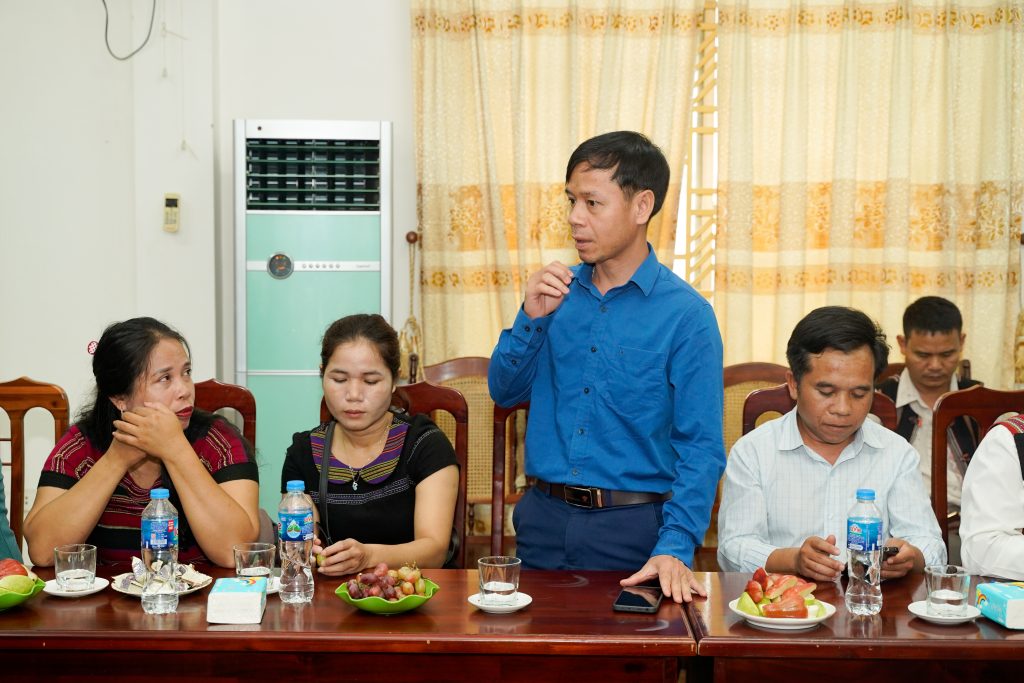
Dr. Dang Thanh Phu, Vice Chairman of the Union of Science and Technology Associations, Thua Thien Hue Province (HUSTA), I am very happy with this business trip, which was organized by an affiliate of HUSTA. Through this trip, I have seen that the organization has arranged a very meaningful visit. I believe this initiative has shown the local people the significance of the experience and interaction with the practices of Tuyên Quang, particularly in the area of aquaculture in mountainous waters. I think this activity is new compared to the people of Thừa Thiên Huế Province, especially in A Lưới District.
In my role at HUSTA, I believe that we are ready to support the Center for Social Research and Development (CSRD) in creating favorable conditions, especially regarding policies, to further support CSRD in enhancing the livelihoods of the ethnic minorities in the district. Additionally, we are ready to help CSRD connect with intellectuals, experts, and scientists from Thừa Thiên Huế to effectively apply scientific and technological advances to sustainably develop agricultural, forestry, and aquatic products, especially the local aquatic products in A Lưới District in the coming years.
I also highly appreciate that CSRD invited experts and scientists from universities in the province on this trip. I believe this is a very practical step, and it should be expanded in the future. Once again, I commend CSRD for the success of this trip, and I hope that in the upcoming plans for 2025 and the following years, CSRD will continue to develop. As the overseeing body of CSRD, HUSTA will continue to create favorable conditions for the development of CSRD in 2025 and beyond. Thank you.
In addition, the community could apply the co-management model to simultaneously conserve native fish species that have nearly been wiped out, such as cá lấu (channa) and cá a toong (Catlocarpio siamensis), while producing local delicacies. This approach would promote community-based local solutions to increase income, improve livelihoods, and conserve the ecosystem. After the study tour, the community expressed their hope and desire to pilot a few fish cages with funding from the project, then continue to spread awareness among local people to scale up the model based on the results of the pilot. The goal is to encourage the community to leverage the potential and advantages of the area to foster economic development.
My name is Nguyen Thi Tuyet, a staff member at the Women’s Union of A Luoi District, Thua Thien Hue Province. This study tour in Tuyen Quang has been a very meaningful trip, not only for the members of the community groups in A Luoi District to visit livelihood models here, but also for them to learn, exchange experiences, and acquire skills in aquaculture. In the future, I hope that the Center for Social Development Research will continue to accompany and support the livelihood community groups in A Luoi more closely and practically. Specifically, I hope they will help find markets so that after raising seafood, the people will have a broader market, ensuring a sustainable livelihood for the community.
My name is Ho Thi Thuoc from Hong Kim Commune, A Luoi District, Thua Thien Hue Province. I visited Tuyen Quang Province to observe the fish cage farming models, and I feel this has been a wonderful experience. The people here have developed excellent fish cage models and community tourism, which are very well-organized. I want to bring back the knowledge and lessons learned from these models to apply in my community.
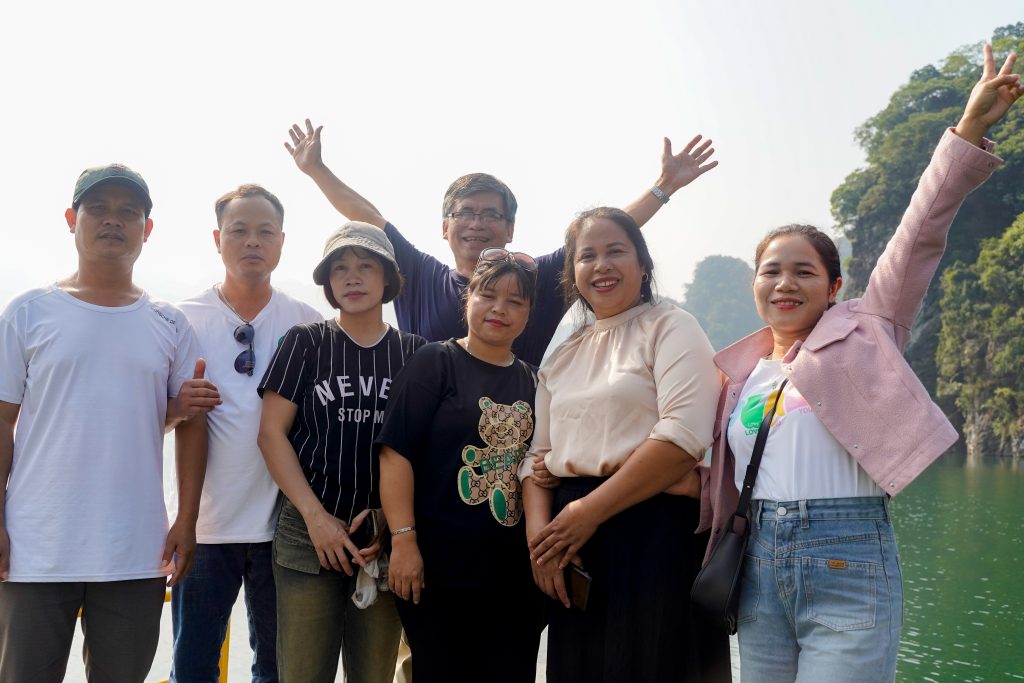
In addition to working with local units, the study tour group also participated in tourism activities in the reservoir area, visiting fish farming cages and tourist sites in Na Hang.
After leaving Tuyen Quang, the A Luoi community engaged in tourism activities in Hanoi, the capital. The trip provided valuable knowledge and practical experiences for the A Luoi community in Thua Thien Hue Province, especially for individuals who are nurturing ideas and plans for developing personal and collective livelihoods in the A Luoi hydropower plant reservoir area.
Associate Professor Trinh Thi Dinh, CSRD Director: As our two-day study tour of the Na Hang Hydroelectric Reservoir and the aquaculture models at the Tuyên Quang Hydroelectric Reservoir comes to an end, we would like to express our gratitude to WARECOD, the Department of Agriculture and Rural Development of Tuyên Quang, the Na Hang District Agriculture and Rural Development Office, and the A Lưới community for their support. Together, we explored the fish cage farming models in Na Hang Reservoir. The legal frameworks and the ways in which Na Hang District and Tuyên Quang Province have assisted local communities in developing cage fish farming offer valuable lessons that we can apply in A Lưới, Thừa Thiên Huế. This is a tremendous resource, and it is essential to establish cooperation to maximize the potential of the reservoir for aquaculture. However, it’s equally important to ensure that the coordination respects legal regulations while protecting the reservoir’s water resources.
A major highlight of the trip was learning about the community self-management groups established to protect aquatic resources. We believe this model holds great promise, as these groups are instrumental in promoting sustainable fishing practices and preventing overfishing. Additionally, Tuyên Quang has a practice worth noting, where aquaculture companies not only farm fish but also have a responsibility to restock the reservoir to replenish aquatic populations. We aim to apply this approach in A Lưới to help restore local fish populations, particularly the rare and endemic species found in the A Sáp River basin.
Research in the A Lưới watershed has shown the presence of rare and endemic fish species that need protection and restoration to avoid extinction. This topic will be addressed during the upcoming project closing workshop. We would like to extend our sincere thanks to WARECOD, Na Hang District, and Tuyên Quang for their outstanding cooperation and for offering the A Lưới community such warm hospitality.
As the trip concludes, the A Lưới community will visit the Ho Chi Minh Mausoleum to pay their respects to President Ho Chi Minh. Many members of the community, particularly from the Pa Cô, Tà Ôi, Pa Hi, and Cơ Tu ethnic groups, carry the Hồ surname, making this visit to the capital a meaningful and symbolic experience.
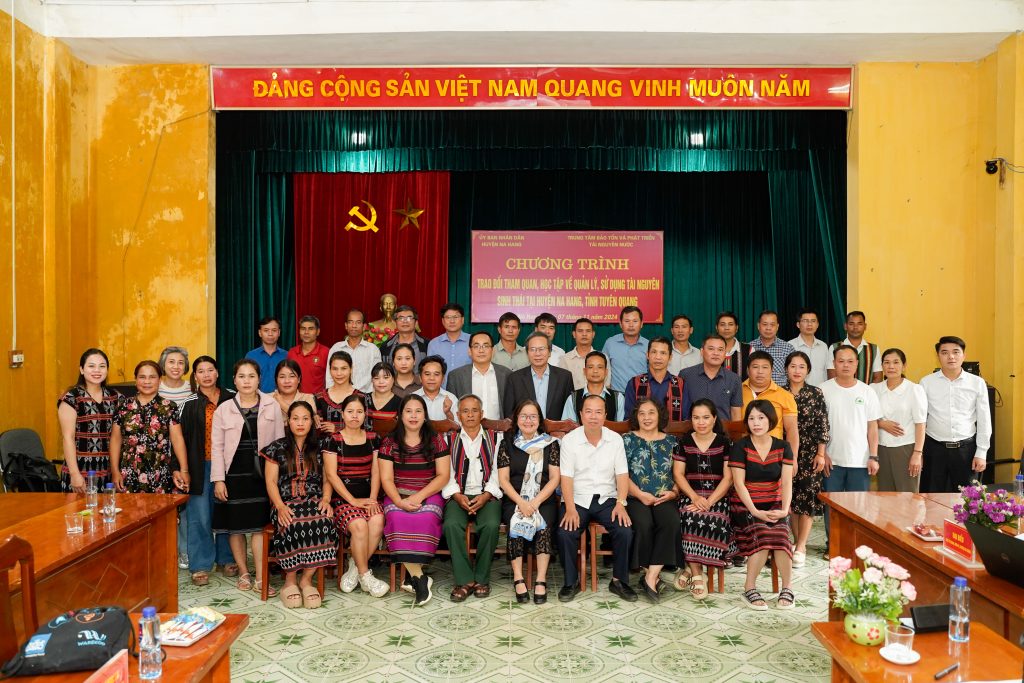
Our journey will conclude with such an experience. We would like to thank Oxfam for funding the A Lưới community and CSRD to implement these projects.
Video of study tour:




